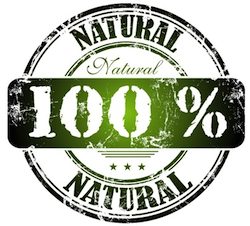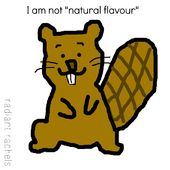
© www.diet-blog.com
Although seeing the world "natural" might put your mind at ease, natural flavors are more like natural disasters.
The next time you grab a healthy snack at the store, try to guess all of the flavors creating that delicious taste. Can you do it? Maybe you need to look at the label.
Most likely you'll see the term "Natural Flavor"— it is the fourth most common ingredient in processed foods according to the
Environmental Working Group just after salt, water, and sugar.
Although seeing the world "natural" might put your mind at ease, natural flavors are more like natural disasters. The Food and Drug Administration defines natural flavors as derived from plants and animals,
but that doesn't mean that your apple flavor comes from apples. In fact, your "apple flavor" can include chemicals such as amyl acetate, cinnamyl isovalerate, isopropyl valerate, and more.It is impossible to guess exactly what chemicals are used though because food companies do not disclose the ingredients that compose their natural flavors. This is why you probably didn't know that a popular ingredient in natural raspberry and vanilla flavors is castoreum, a secretion from beavers' anal glands.

© www.radiantrachels.com
Say what? That's right, beaver butt.
And while the idea of licking a beaver's behind might feel like the most disturbing thing about natural flavors, it really isn't. Natural flavors can contain more chemicals than artificial flavors (anywhere from 50 to 100 ingredients can go into one flavor) because it can be more difficult to create a certain taste without synthetic chemicals. Natural flavors are also less regulated than artificial flavors because they are the intellectual property of a company and thus are tested by the Flavor and Extract Manufacturers Association of the United States rather than the FDA.
Even more disturbing is that chemicals and additives serving purposes beyond taste can be snuck into a product under the "natural flavor" umbrella. If you are still upset over the beaver butt business, then you might not want to hear that
almond flavor, created by benzaldehyde and benzoic acid, is actually toxic and can be lethal in large doses. Of course, every body is different so there could be an additive or chemical that is making you sick or giving you digestive issues and you won't even know what it is. The only way to ensure you know exactly what is in your food is to stick to whole foods and companies that list all of the ingredients individually on their packages.
So why do companies use natural flavors? If you have ever eaten one perfect strawberry, and then bit into a sourer one from the same batch, it makes sense. Creating a franken-flavor means that every product will taste exactly the same, every single time. But on a more sinister level, these natural flavors are also used to create flavors that might taste natural, but are actually more addictive than their whole food counterparts, causing you to eat and crave more of it.
Beware; natural flavors are hiding in your favorite beverages too. You might not be surprised to find natural flavors lurking in a cup of juice, but many teas, even supposedly healthy and organic brands like Yogi and Teavana, contain natural flavors. How a tea tastes relies heavily on the quality of the tealeaves, so often companies will use a cheap, low-quality tealeaf and then pump up the taste with natural flavors.
Never skip reading a label!
Comment: See more: